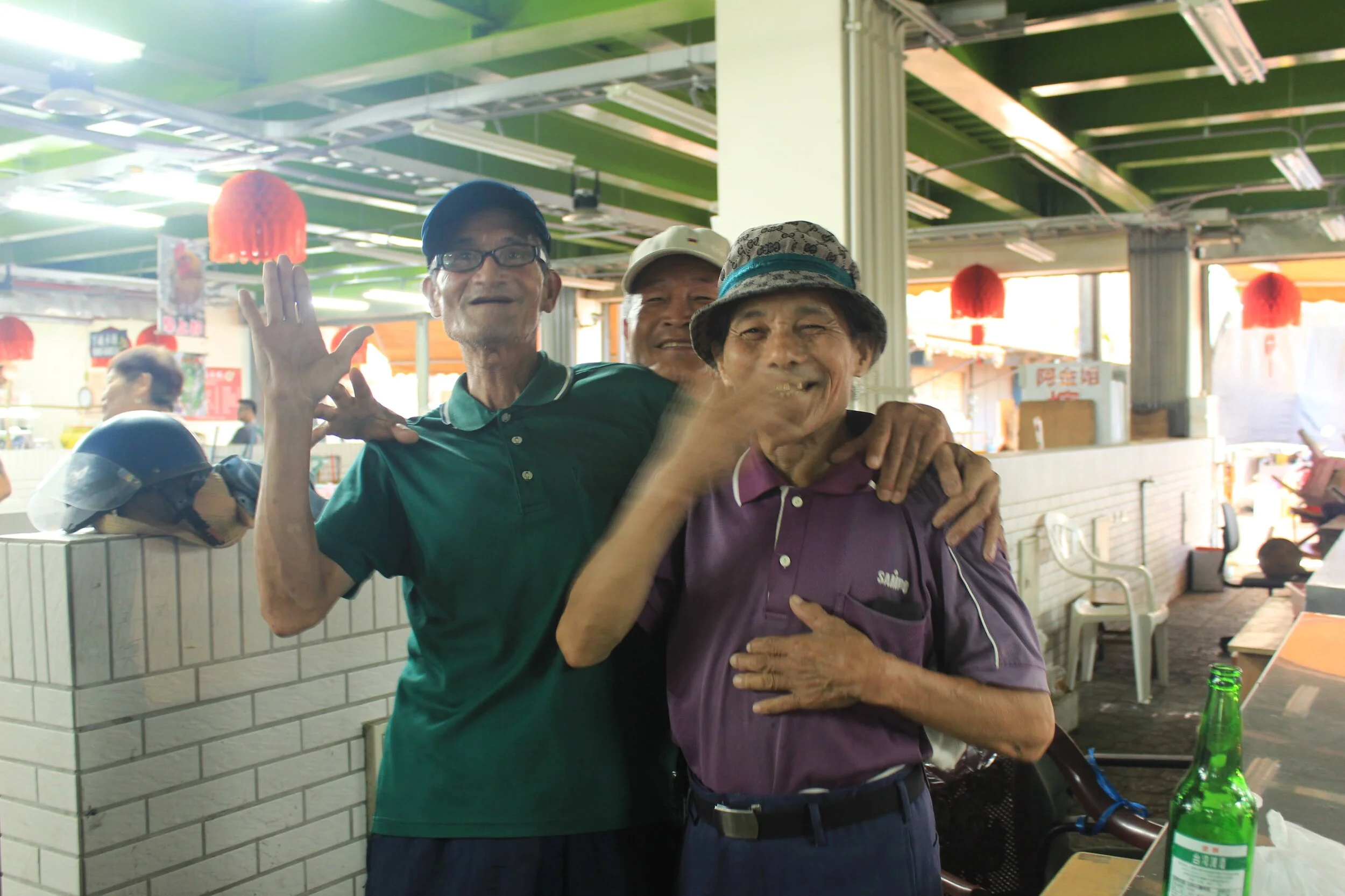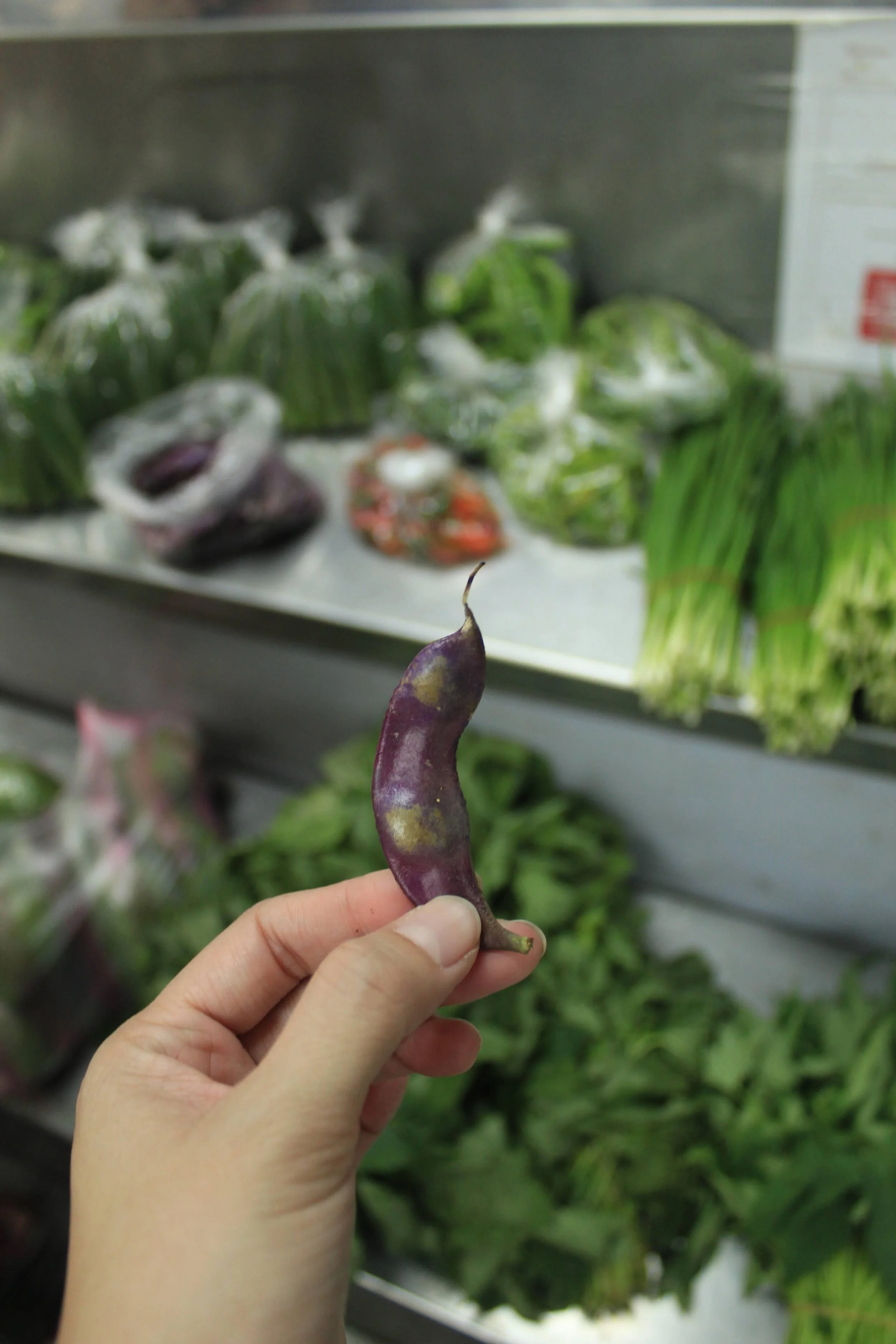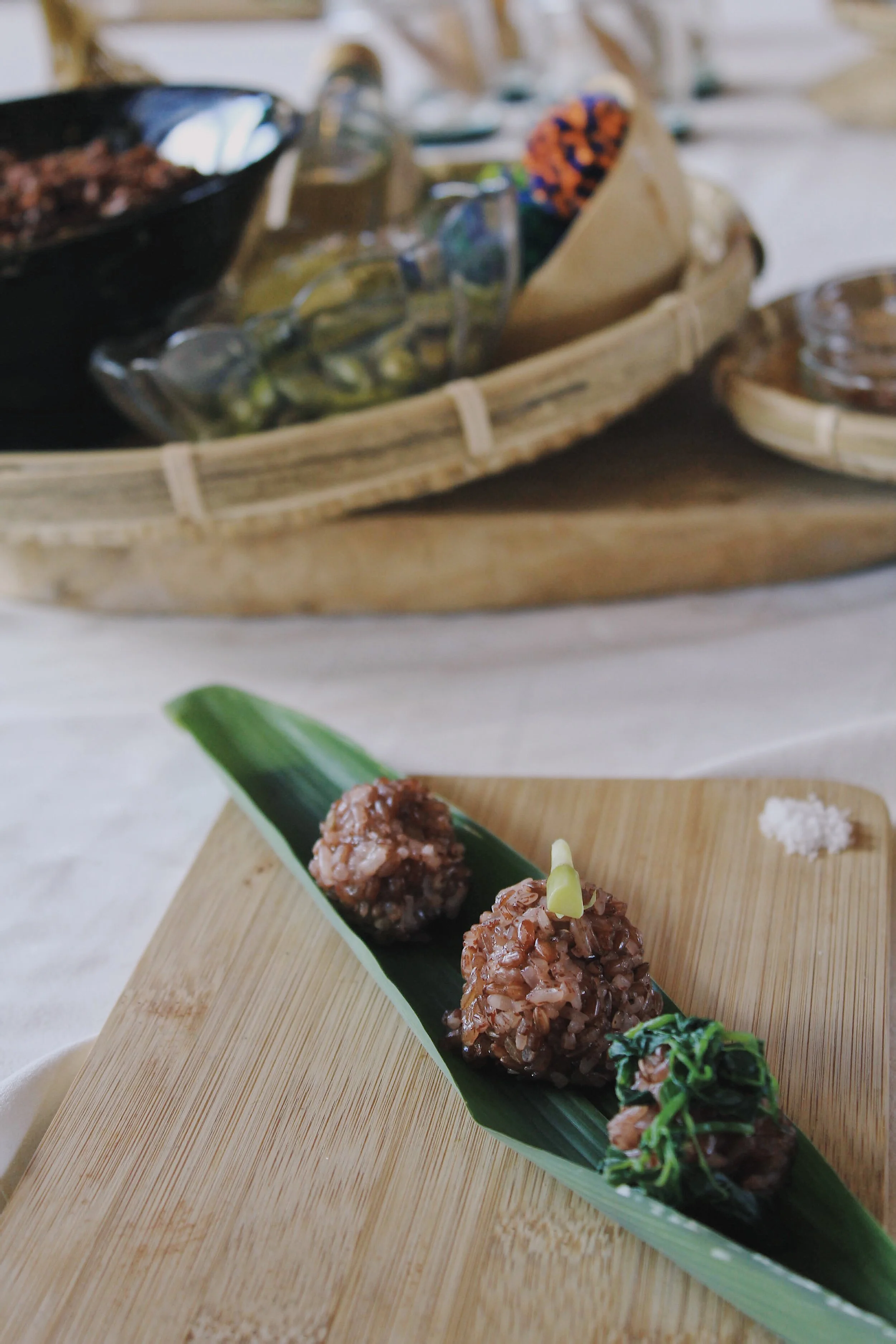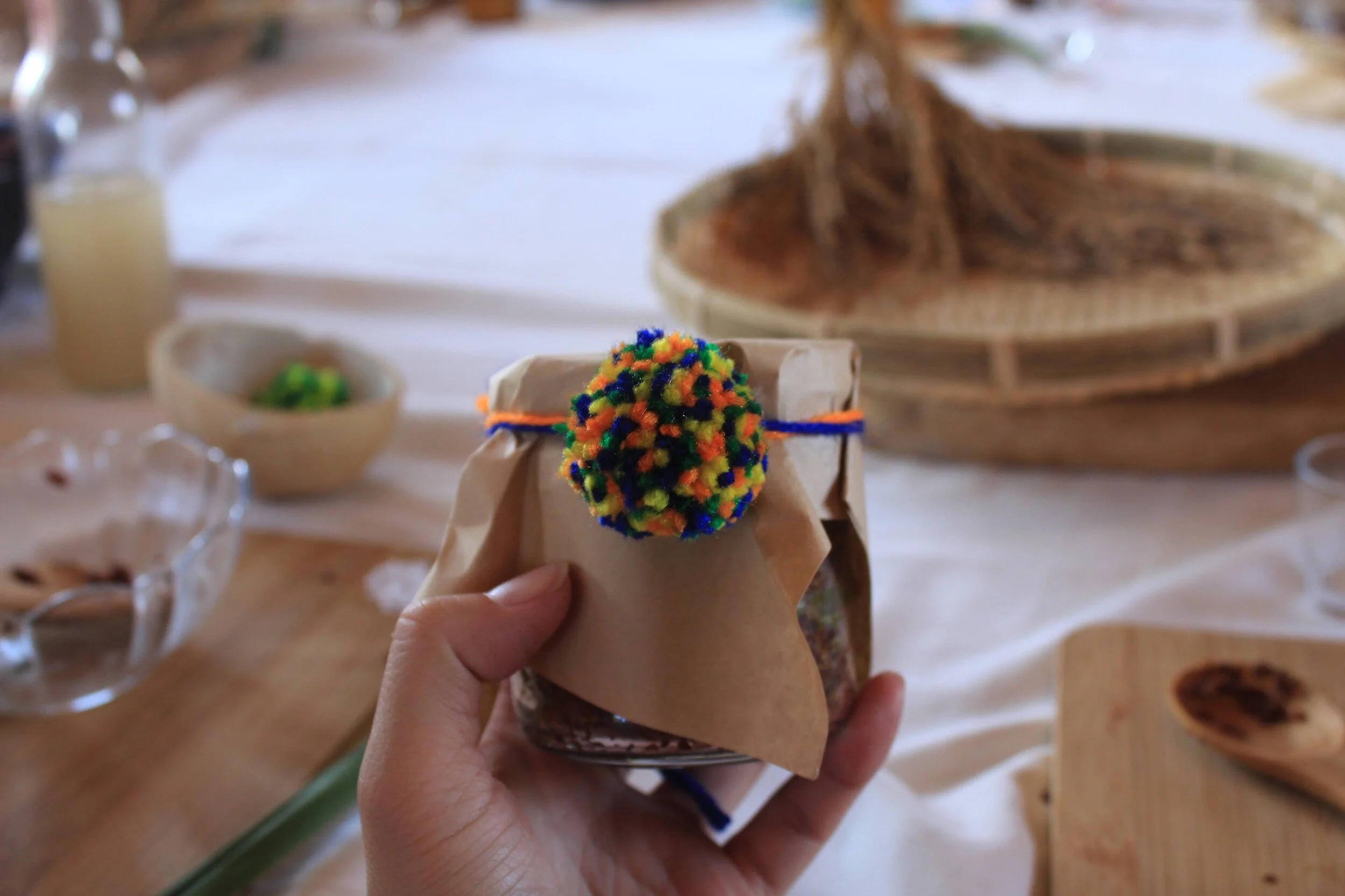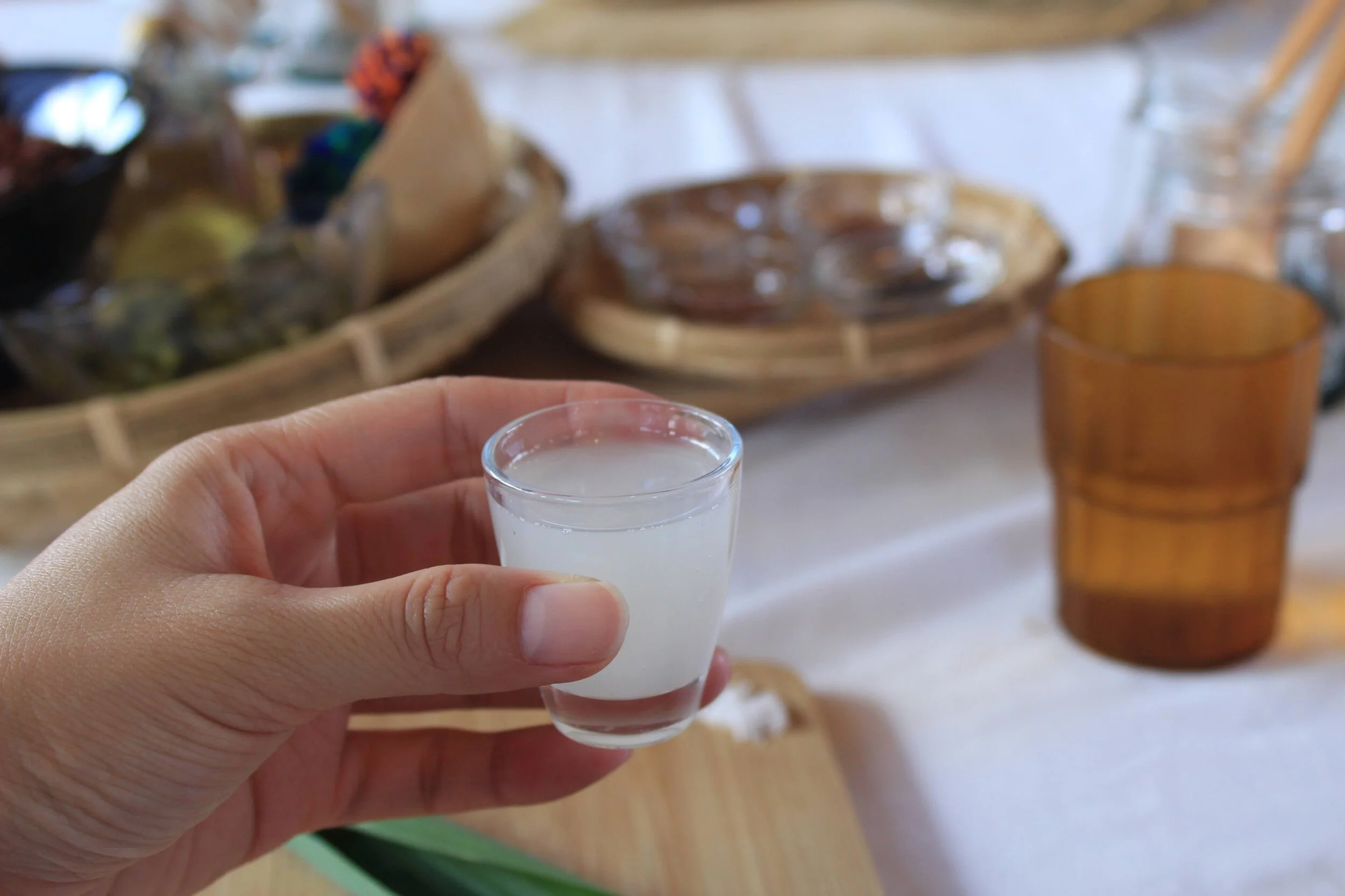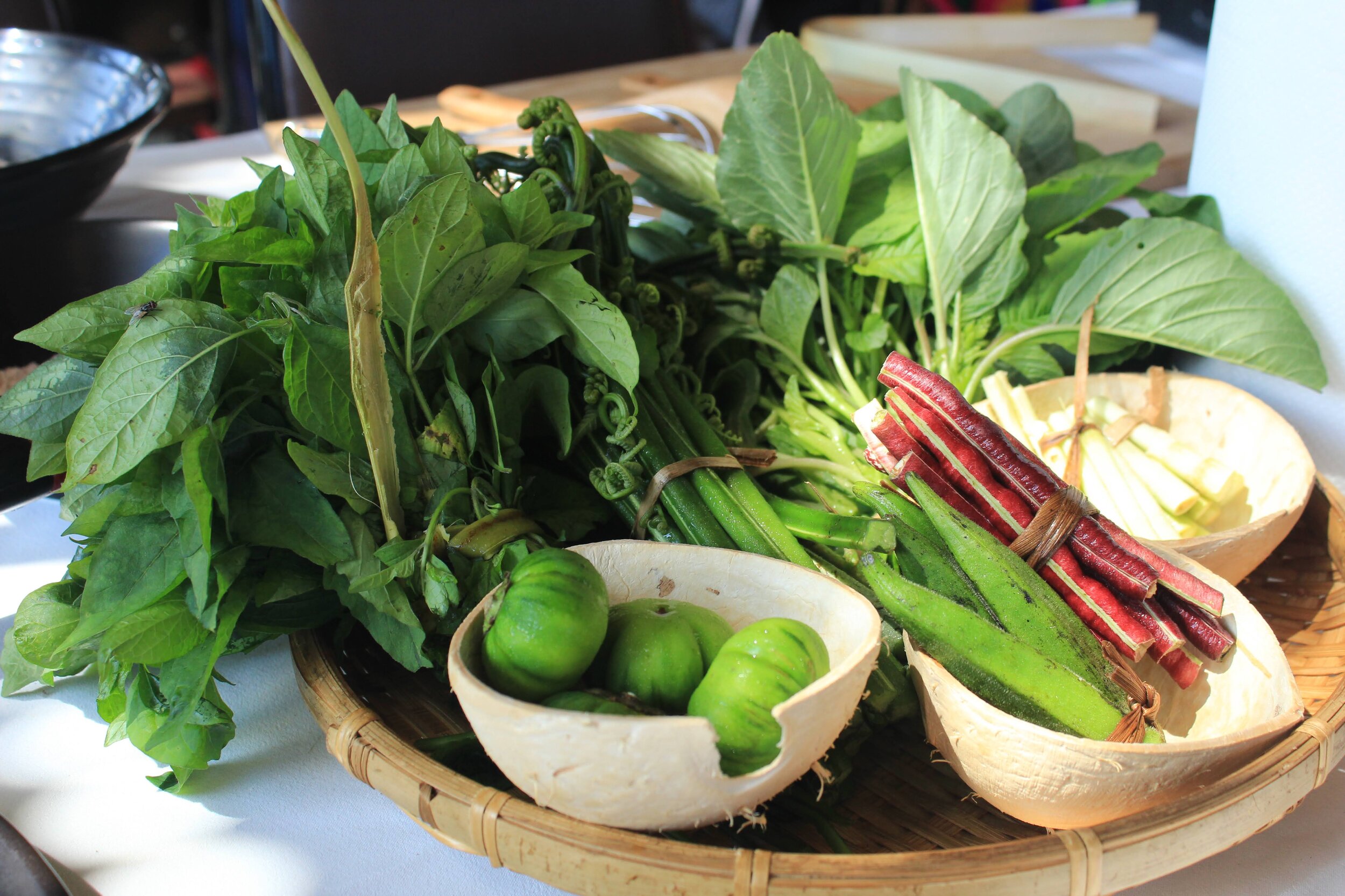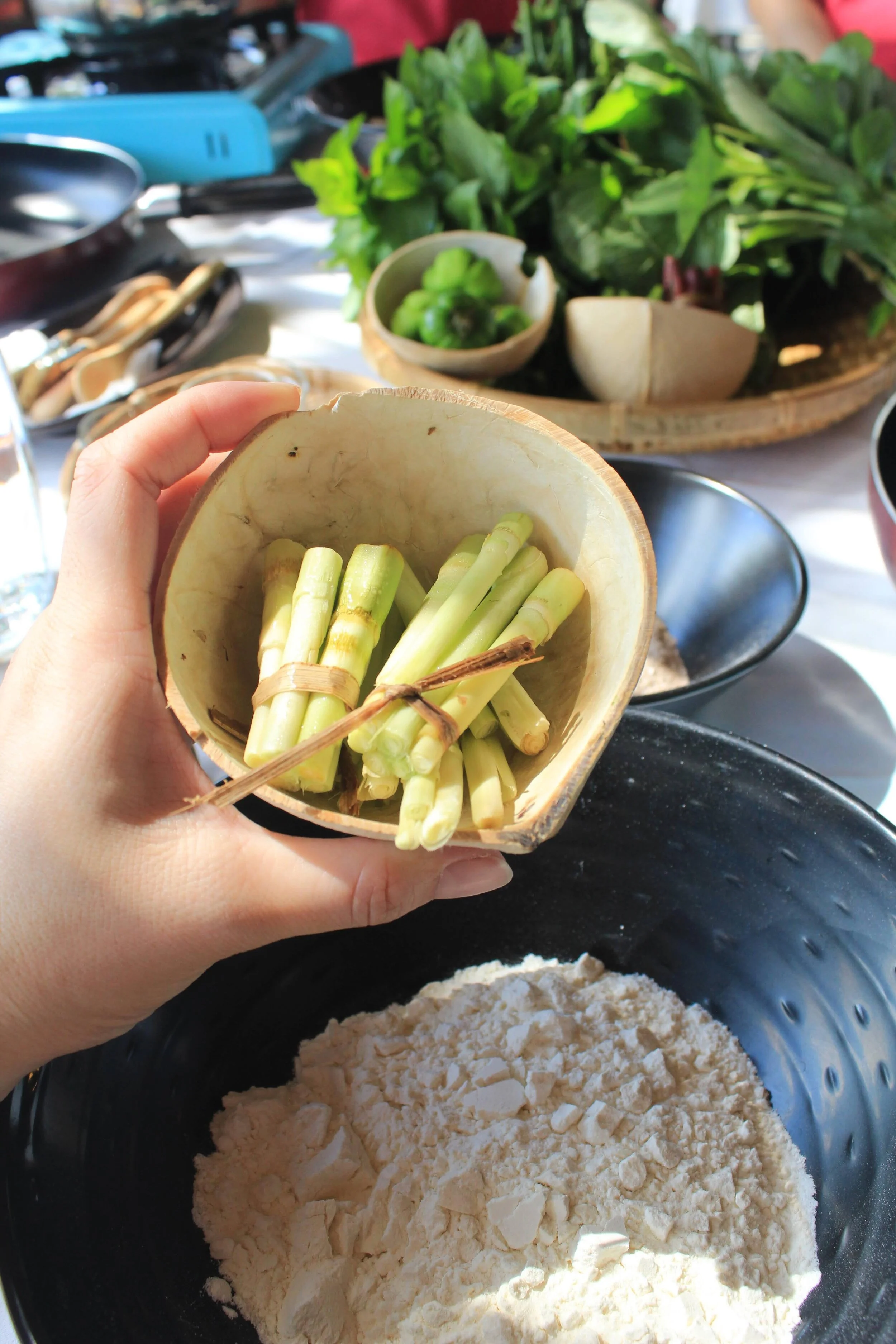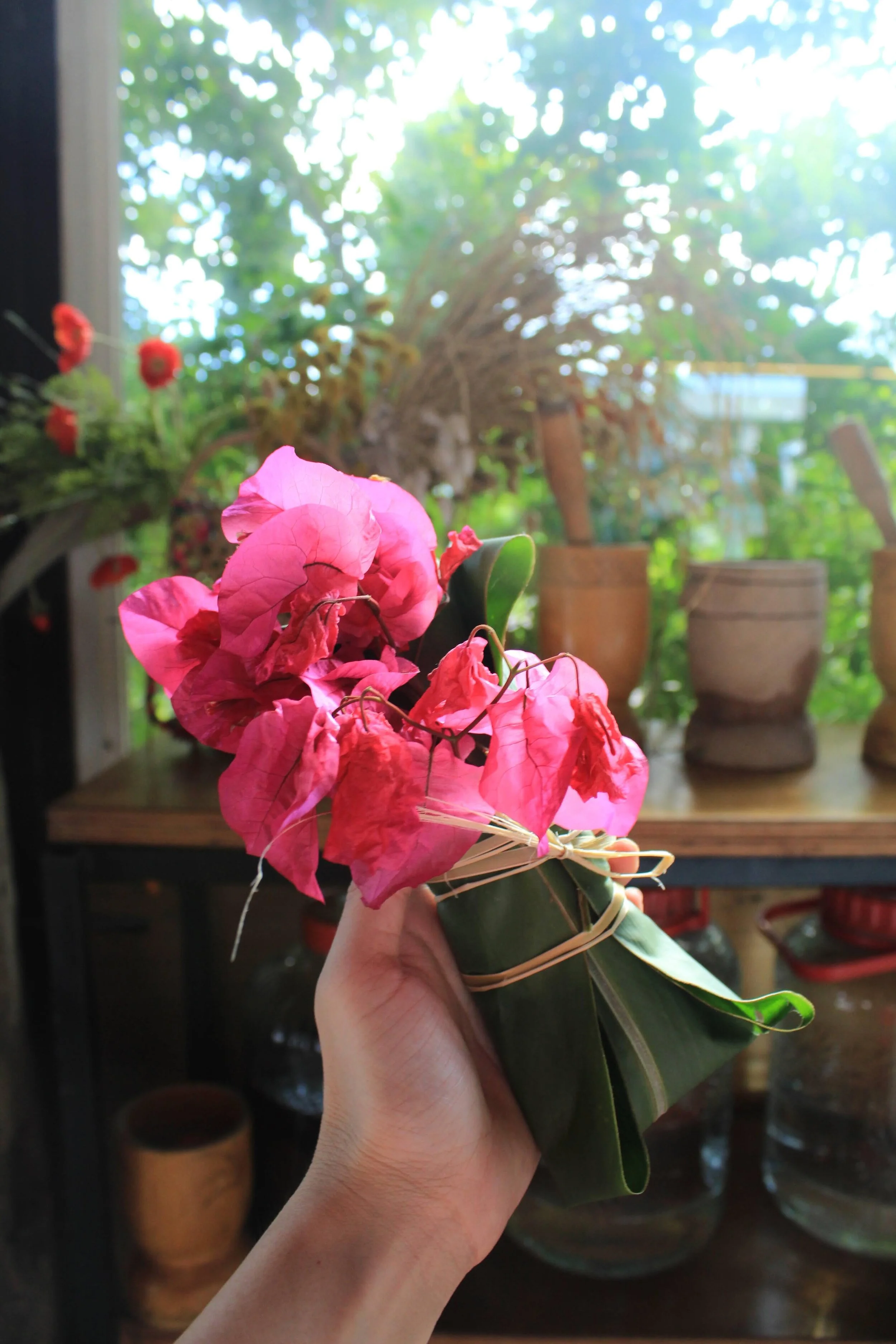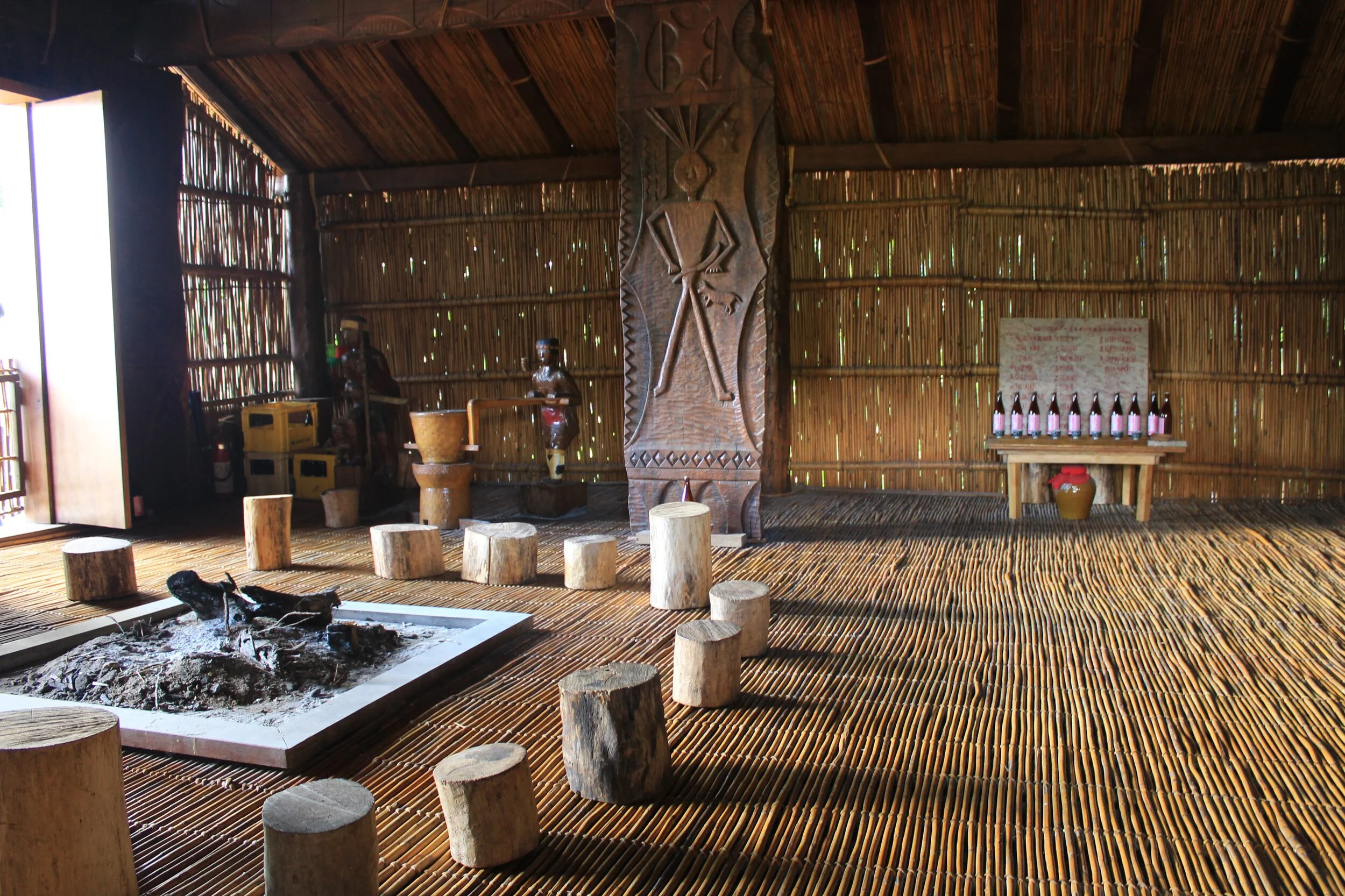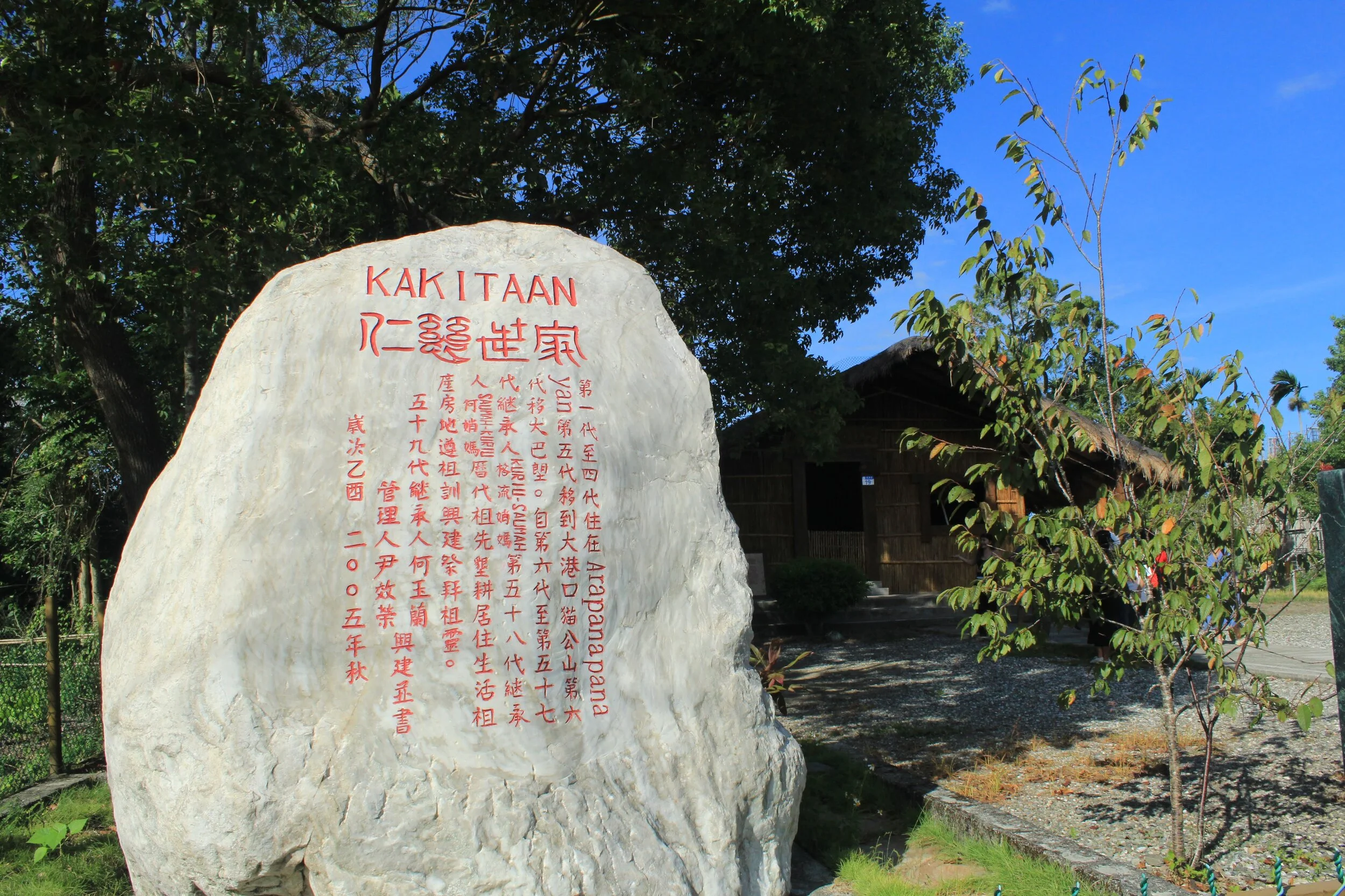Indigenous Tourism in Taiwan: A Day Trip to the Amis Tribe Tafalong Community in Hualien
Nga’ayho! That’s 你好 or hello in the Amis language. It’s Friday, September 18th and a group of us led by MyTaiwanTour are being welcomed into Guangfu Market, in Guangfu Township of Hualien County with this introduction. In this region, red glutinous rice is an important crop, alongside bamboo and rattan. Currently, only one harvest per year of red glutinous rice is produced, so it is quite valuable. We are introduced to a variety of wild edible greens, most of which you cannot find at a normal supermarket. We stop and take pictures of mini frogs, which apparently taste delicious when cooked into a soup that consists of frogs letting their bowels loose… wow. Most of the wild greens here were freshly picked this morning and sold by local villagers. What is not sold is then cooked for an afternoon meal and enjoyed with a side of xiaomijiu 小米酒 rice wine. Some of the most jovial individuals stop by to introduce themselves to us, a bunch of foreigners touting large cameras and selfie sticks.
We are given a 100ntd allowance to purchase a few items for our upcoming meal, so we grab a plastic bag full of an assortment of vegetables and stop to chat with a vendor that is selling fresh mochi. We head out to the bus and head to 太巴塱紅糯米生活館 Tafalong Red Sticky Rice Pavilion for the next stop on our tour.
We pull up to the pavilion and are welcomed with pandan tea and are invited to sit at a communal table outfitted with Tafalong aprons and red sticky rice balls to try. Of course, can’t forget the rice wine!
We start making our own red sticky rice traditional chili (which is great to eat with rice/noodles or to stir fry with chicken) and decorate the bottles with a pom pom, which is representative of the eyes of the tribe’s ancestors. Pom poms also decorate the lover’s bag, also known as an alufu, which are carried by single males of the tribe. If the strings on the bags are separated, it means he’s single - tied if he’s taken. During the harvest festival, girls will place a betel nut inside of the bag to indicate that she likes him. This betel nut represents promise.
About the Tafalong tribe
The Amis tribe is a matrilineal society, where children take on the mother’s names and husbands move into the wife’s household after marriage. We hear about the origin story of the Tafalong tribe, which means “white crab” in the Amis language. (There were a lot of white crabs in the previous location where the tribe lived) The story begins with a family of five children - four boys and one girl. The family’s mother is pregnant with child number six, a girl who is always glowing. This shining girl is admired by the son of the sea who wants to take her hand in marriage. The glowing girl’s parents try to hide her, but are unable to. The daughter is eventually taken away. A huge flood came, and one of the family’s sons swam to the south and became the ancestor of the Paiwan tribe. The second son swam to the west, a third swam to the north. Her mother became a tree to look over the ocean for her lost daughter, while her father turned into a bird to look for his daughter. The remaining brother and sister get married to become the fifth generation of the Tafalong tribe.
After we finish making our chili, we are led over to tables outfitted with the most beautiful array of vegetables, and a small assortment of traditional condiments such as prickly ash powder, fermented rice dressing, ground peanuts and sugar. We start to boil the vegetables and are told to separate the ingredients on a plate by type after they have been cooked. It’s time to make the red glutinous rice flour pancake!
The small little green pumpkin-like veggies are actually 2x more bitter than bittermelon, which is already hard to swallow in my opinion (hehe). We wrap the rolled pancakes in a ginger root leaf, which gives off a slight ginger flavor when partaking in the “bento” roll later on. I absolutely love how local and sustainable everything is - locally grown, sustainably packaged and zero plastic in sight. We are then shuttled onto the bus with pancakes in hand to visit the Kakita’an ancestor’s house (Kakita’an 祖屋), where the souls of the tribe’s ancestors live. Throughout the last one hundred years, the house, the pillars inside that represent the origin stories and experiences of the tribe, as well as the souls of the tribe’s ancestors have gone through many different trials and tribulations to end up where they are today. We meet two ladies who are of the older generation of the tribe who describe the house and perform a small ritual for the ancestors before we are allowed to enter. The house is now designated a cultural landscape and heritage site as it is the center of the tribe’s life and a place to offer sacrifices to ancestors and to God.
After this really special cultural tour, we are back at the Red Sticky Rice Pavilion for the indigenous cuisine meal, dance performance and mochi making!
And what an incredible feast it is…
Some of the highlights: herbal algae omelette, vinasse smoked chicken, lover’s tears algae salad, wild green pancake, salted pork with rice balls - all paired with a delicious lemon rice wine!
I can’t contain my excitement for mochi
Mochi, also known as toron in the Amis language is one of my favorite things to eat. I love the sticky, chewy texture - so much so, I named my little white Prius after it. After some rigorous mochi pounding, we danced the night away with the lovely aboriginal ladies and gentlemen. It was such a treat to be invited to participate in this tour with MyTaiwanTour.
Thank you so much to the Tafalong tribe for your hospitality, aray! 謝謝 or thank you in Amis
Individual bookings can be done through their Facebook page here.


